|
With so many in-person sales opportunities shut down in 2020, many brands began to reach out looking for new strategies to connect with their audience with sales messaging while they were unable to visit networking events or sell easily inside a brick and mortar venue. It became clear that until that point, many of these companies thrived without doing much work online, but the moment required stretching and planning new ways to operate. Now, those business leaders understand the value of having a foundational marketing strategy that incorporates online business endeavors such as digital advertising.
To help those seeking out strategies to use digital ads for conversions, we've outlined some information below to help define digital ads and share tips for optimizing your strategy to get better results. What is Digital Advertising? Digital advertising includes ads on search engines like Google; social media networks such as Facebook Ads, or display ads on web and mobile. Ads are one of the oldest and most common forms of advertising on the internet. What is Digital Ad Tracking? Digital advertising offers high definition targeting down to the individual user, allowing advertisers to reach the right audience with their message. For website retargeting, an increasingly common subset of digital advertising, marketers find their target customers through websites that are visited by consumers prior to conversion. With retargeting ads being served only when visitors have been identified as potential buyers (through cookies with some other form of validation), these type of ads provide extremely targeted marketing — a powerful way bring new leads into your sales pipeline. Today's marketers have plentiful data, so we're able to target individuals we believe have buying intent based on their online activity. Tracking cookies allow us to see a history of each person's interest in news, websites they visit, places they shop, and what they search for. This allows us to know which IP addresses (the markers that show what device a person is using) to target and work towards a close. The system can also go as far as providing a conversion cycle for visitors to your own website. A code added to your site tracks when a potential customer visits one of your properties such as your website or app. Once they visit a page you've tracked, the system knows they have interest and exposure to the brand and can target them with intention to close a sale. You can create sales cycles for each sales page of your website to stay in front of your target customer and consistently message them until they close a sale. The goal of this strategy should be to encourage action towards completing whatever step comes next: whether it's making a purchase or signing up for more information. In other words, with digital advertising you are targeting those who would most likely already have an interest in what you're selling and able to keep in front of them, so they can be converted into a buyer. What if My Digital Ads Aren't Converting? Digital advertising is just one piece of a total system of closing sales for your business. It's important to make sure all of the pieces to your online business systems work in tandem to get the best results from each piece. Every business is different, so what works for one company won't be the same best practices for another. If you're not seeing results from digital advertising, it may be time to optimize and review other aspects of your strategy. Some areas to consider:
How Do You Measure Digital Ad Conversions? Be sure that you are tracking conversions in an easy way. Statistics about each ad can prove useful as a starting point but don't get stuck there if you want to optimize your campaign. Even though many people measure clickthroughs, generally conversions are taken into account once a person takes an action on the landing page they were lead to after clicking through from an advertisement. These actions include things like watching videos or filling out forms (signing up for more information). Some conversion stats to consider include:
How Much Should I Budget for Digital Marketing Ads? Once you know which digital platforms are best for you, how can you determine the amount of your budget to spend? You should always do a test campaign and allocate the maximum amount possible for each channel. If you see results and want to continue with that tactic, then adjust based on those results and what is available in terms of budget. The bottom line is this: users are accessing information from smartphones at least once every 15 minutes , so they will likely see your ads multiple times per day (unless they opt out). By setting up retargeting through online advertising tactics, it's easier than ever to get more sales-ready leads into your funnel because you're targeting people who've already shown interest in your product or service. Since these ads carry considerable weight in terms of their capability to convert customers, a good budget allows you to pay to be seen more often in a shorter period of time, which quickens the conversion path. Taking a smaller budget might also reduce your capacity to achieve real results. For an easy calculation, consider the lifetime value of a single customer. For example, if a product costs $30 and a customer typically buys monthly for 2 years, your customer lifetime value is $720. This means you can budget to spend about $72-108 per converted customer and get returns over $648 each over 2 years. Digital ads can be extremely valuable as part of your overall marketing system and business foundation. With the right tracking and strategy, they can bring new leads into your sales pipeline. Remember that measurement is key to increasing conversion rates. Need help getting started on digital marketing for your business? Go Lead Consulting can assist with setup and management of Google Ads and Display, and we can also provide SEO, writing and website redesign to help you get better conversions. Sign up for a free marketing analysis.
0 Comments
Leave a Reply. |
MENU
Email: krystal@goleadconsulting.com
Phone: 720-515-3078
Mailing Address
Go Lead Consulting
1580 N Logan St Ste 660 PMB 62223
Denver, Colorado 80203, US
Phone: 720-515-3078
Mailing Address
Go Lead Consulting
1580 N Logan St Ste 660 PMB 62223
Denver, Colorado 80203, US



 RSS Feed
RSS Feed